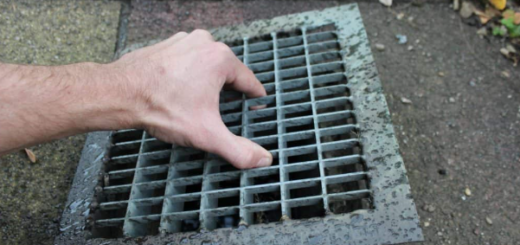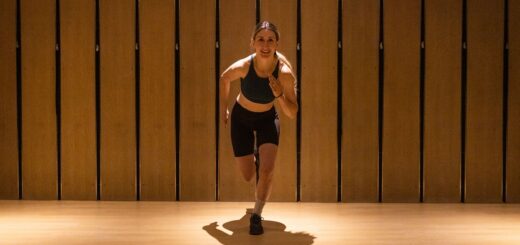Why sitting all day hurts?
Sitting all day hurts! That sprawled and untidy pose, with which you stand hours and hours in front of the computer, or on television, is not good for you at all.
An interesting and worrying article published in the Washington Post and written by movement education specialist Ellen Barlow highlights how sitting all day hurts and can have serious health consequences.
Good posture relies on an active relationship between gravitational and anti-gravitational forces (i.e. those that you put on through the use of the few and dry muscles that you find yourself in).
Sitting all day hurts, so movement is the key to staying healthy in a job. Taking breaks from time to time (such as walking or stretching) is very important.
The “postural” micro movements you can do while sitting are also important. How to simply straighten, contract the abdominal muscles, point the feet up and down to move the ankles and stimulate the low circulation of the legs.
1 – Damage to organs: heart, pancreas and colon
Heart disease
As you sit for a long time, your muscles burn less fat and your blood circulation slows down. This promotes an accumulation of fatty acids in the heart.
Also, sitting for a long time can cause your blood pressure and cholesterol to rise. So people who lead a sedentary lifestyle most of the time are twice as likely to get cardiovascular disease than those who move more
Super work of the pancreas
The pancreas produces insulin, a hormone that transports glucose to cells for energy. But muscle cells, if inactive, do not respond promptly to insulin, so the pancreas produces more and more.
This can lead to diabetes and other diseases.
A 2011 study found a decline in the insulin response in a subject after just one day in which he sat continuously.
Colon cancer
Recent studies have linked that sitting down leads to a risk of getting cancer at …
- Colon
- Otherwise
The reason is not entirely clear, but an accredited theory states that excess insulin promotes indiscriminate cell growth.
Another study states that moving regularly increases natural antioxidants that counteract free radicals – which are potentially carcinogenic -.
2 – Muscle degeneration
Soft abdominals
When you stand, move or stand it is the abdominal muscles that hold you upright. But when you’re sitting on a chair, your abs will remain unused and lose tone.
Floppy back and abdominal muscles lead to change, increasing it, the natural arch of the spine to lead to a pathological condition called hyperlordosis.
This means having an unnatural and excessive arching of the spine.
This causes, in the long run, weakness, instability and less resistance of the spinal column with consequent inability to withstand the pressures.
Co-tight hips
The flexible hips help to keep you upright, but the “chronic” seated ones so rarely extend the flexor muscles of the hip that they become short and limit the range of movements and the length of the step.
Decreased hip mobility has been shown to be one of the main reasons why older people tend to fall.
Soft buttocks
Sitting down implies that the buttocks do absolutely nothing and even get used to it quickly. This compromises stability, the ability to maintain a steady pace and to get up easily.
3 – Leg problems
Limited blood circulation
Sitting for long periods of time slows down blood circulation.
This entails a stagnation of fluids in the legs, which leads to problems ranging from swollen ankles, to varicose veins, to dangerous blood clots called “deep vein thrombosis”.
Brittle bones
Physical activities “under load” such as walking and running stimulate the hip and lower bones of the body to grow thicker, denser and stronger.
Scientists attribute the recent increase in osteoporosis cases precisely to the rampant lack of physical activity.
4 – It hurts the brain and neck
Fogged brain
Moving the muscles pumps fresh blood and oxygen to the brain and this leads the body to produce all the substances useful for stimulating brain activity and helping the mood to remain stable.
On the contrary, when you are sedentary for a long time, everything slows down, including brain function.
Neck stretch
If you sit in front of a computer for too many hours, stretch your neck forward towards the keyboard or tilt your head to type text messages on your cell phone, you strain your cervical vertebrae a lot and you can lead them to be permanently imbalanced.
Shoulder and back pain
When leaning forward, you extend the shoulder and back muscles too much, especially the trapezius , which connects the neck and shoulders.
5 – Back at risk
Stiff back
When you move, the soft discs between the vertebrae expand and contract like sponges. They absorb fresh blood and nutrients. Conversely, when you sit for a long time, the discs are crushed unevenly. The collagen hardens around the spine to support tendons and ligaments.
Disc damage
Those who sit for a long time are at greater risk of contracting a lumbar disc herniation. Here because!
The muscle called psoas crosses the abdominal cavity and, when it shortens (for the prolonged sitting position), pulls the upper lumbar spine forward.
Consequently, the weight of the upper part of the body rests entirely on the ischial tuberosity (the part of our skeleton that supports the weight of the body in a sitting position) instead of being distributed along the entire arch of the vertebral column.
You may also like https://poppypost.co.uk/













